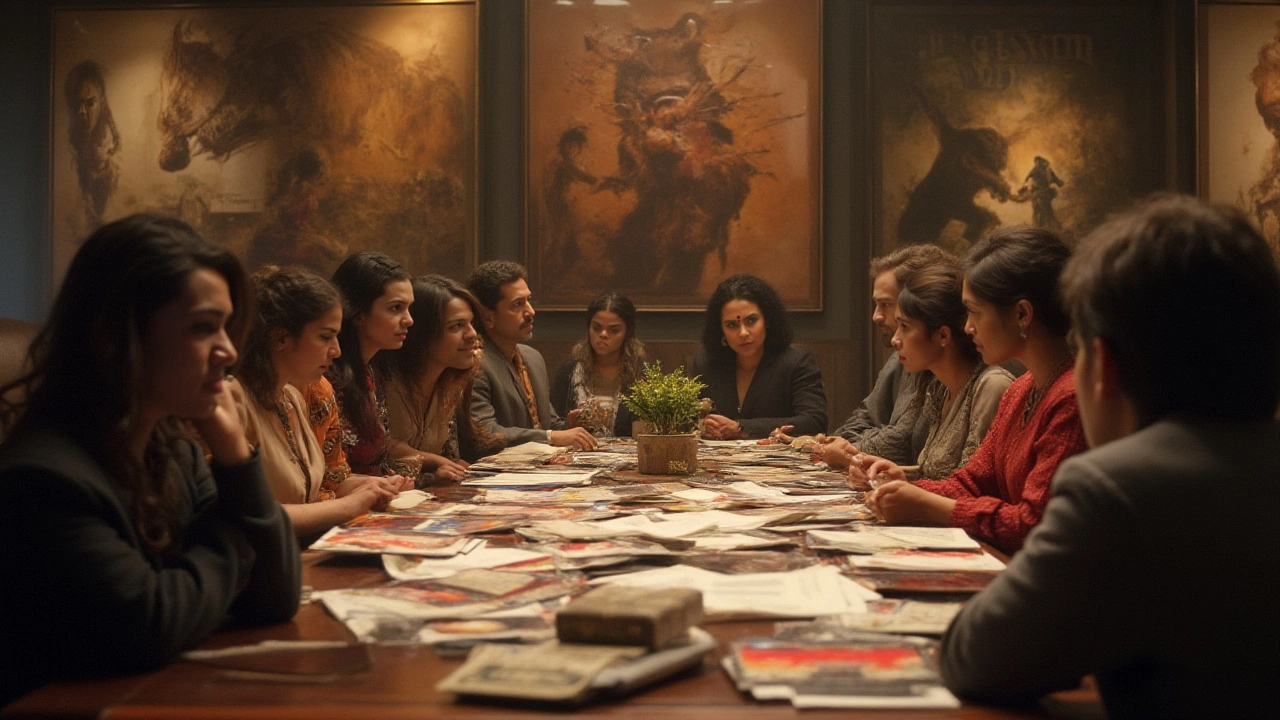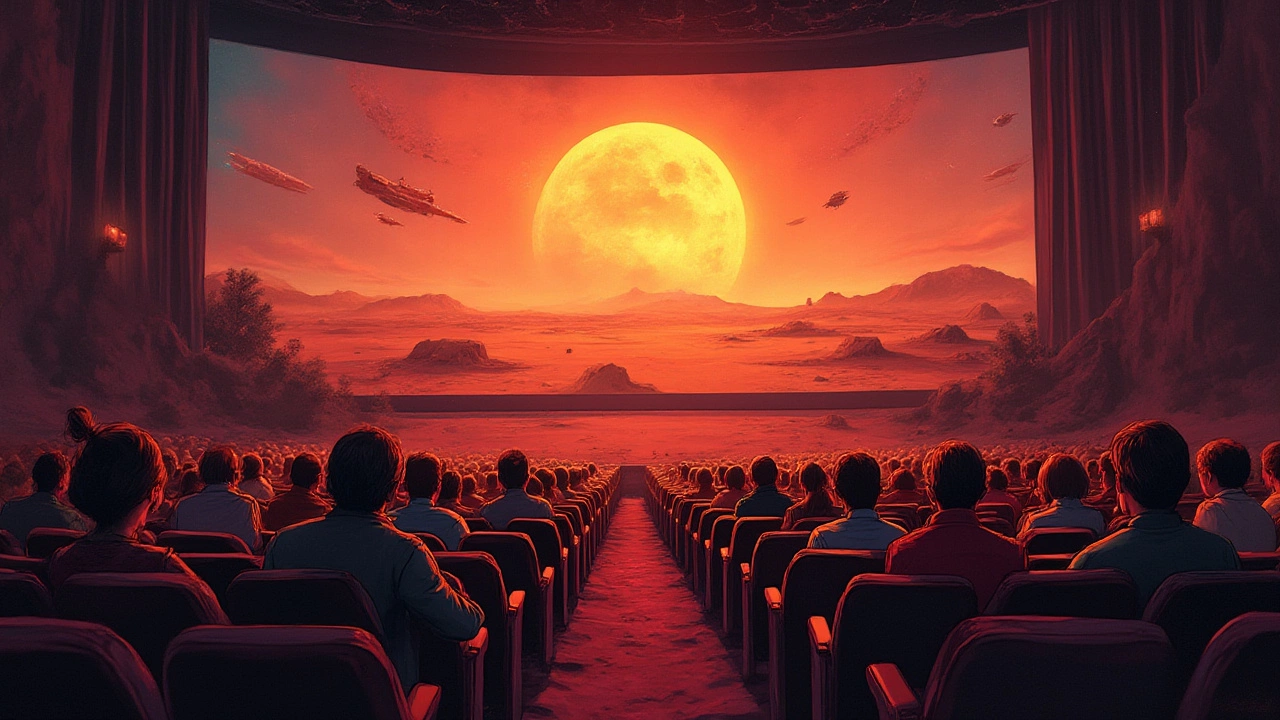Why Was John Carter Cancelled? The Real Story Behind Disney's Disastrous Gamble
 Jul, 18 2025
Jul, 18 2025
Poor John Carter. You’d think a film with all the right ingredients—big studio backing, a legendary literary source, a $250 million budget, and a special effects team that could make a potato look spectacular—would be destined for blockbuster history. Instead, Disney’s John Carter pretty much did the cinematic version of tripping before the finish line. The story goes deeper than bad marketing or a tricky March release date. There’s an entire constellation of missteps, misunderstandings, and maybe just a stroke of misfortune that turned what could have been a mega sci-fi franchise into Hollywood’s favorite cautionary tale.
The Dream of Mars: Ambitious Beginnings and Shaky Foundations
It all started with big dreams. John Carter was based on the "Barsoom" series by Edgar Rice Burroughs, books that have been beloved since the early 20th century. You might not have read them, but the stories about a Civil War veteran magically transported to Mars inspired Star Wars, Avatar, Superman, and almost every space epic you can name. Disney held the rights since the 1980s, passing them around like a hot potato. Directors like Robert Rodriguez, Jon Favreau, and Kerry Conran all tried to make something happen—each version fizzled before takeoff. Andrew Stanton, the Pixar legend behind Finding Nemo and Wall-E, finally signed on to direct what was to be his live-action debut. Plenty at Disney believed he’d sprinkle Pixar’s magic fairy dust over its struggling live-action division.
But the foundation was already a little wobbly. The "Barsoom" books had hardcore fans, but the mainstream audience barely recognized the name "John Carter." To most, it sounded like your dentist, not a swashbuckling space hero. The books, epic as they were, felt old-fashioned next to the Marvel movies and Harry Potter juggernauts everyone was flocking to. Hollywood studios sometimes get swept up chasing nostalgia, expecting a century-old property to perform like the latest TikTok phenomenon. That rarely works—unless you have a clear plan and a brand people already care about. Disney marched into this Martian adventure betting that classic pulp would suddenly become pop culture gold. The bet would not pay off.
You also had a director making his first live-action movie, with a notoriously complicated production. Stanton leaned on Pixar-like freedom, sometimes letting scenes be rewritten or reshot extensively. Reshoots ballooned the budget by tens of millions—rumors in Variety and The Hollywood Reporter estimated the final spend pushing $350 million, once global marketing costs were counted. Now you needed the film to make over half a billion dollars just to break even. The stakes were sky high. The cracks in the foundation widened with each day of shooting.
The Marketing Meltdown: How Not to Sell an Epic
Disney’s marketing team never figured out what story they were selling. First off, they dropped "of Mars" from the title, so the movie wasn’t "John Carter of Mars"—which might at least have hinted at interplanetary adventure. Some execs worried the word "Mars" would scare away girls; others feared the brand was too obscure or cheesy. The result was posters and trailers that were confusing, generic, and bland. Most people had no clue what the film was about—a high adventure on a dying red planet, full of weird aliens and sky battles. Early trailers leaned hard on action, but gave away almost none of the plot or what made John Carter different from, say, Prince of Persia, another Disney bomb from two years earlier.
Disney poured about $100 million into promotion but made rookie mistakes. One memorable statistic: only about 23% of survey respondents in the US even knew what John Carter was in the month leading up to the premiere (data from The Hollywood Reporter, 2012). They tried TV tie-ins, web ads, even a prequel graphic novel, but the campaign never found its voice. When your film needs to top $600 million worldwide to avoid red ink, you need Marvel-level hype. Instead, John Carter’s campaign was so lifeless, there was even an internal joke at Disney: "The best thing about Mars is it doesn’t come with expectations. The worst thing about Mars is nobody cares."
Compare this to the way Disney marketed The Avengers, which dropped only two months later. That campaign hummed like a well-oiled machine. Characters, stakes, and spectacle were clear in every image and TV spot. John Carter? Just a stubbly guy in a loincloth doing cool jumps. Audiences shrugged. No wonder the ticket presales were dreadful.

Box Office Bombshell: What Happened When John Carter Opened
The movie landed on March 9, 2012. Disney rolled it out big: over 3,700 theaters in the US, a 3D release, IMAX screens, the works. But the writing was on the wall by Friday night. Opening weekend, John Carter made just $30 million domestically—about as impressive as Nimbus chasing his tail. That was a disaster considering the mammoth costs. To add insult, it came in second behind The Lorax, an animated family flick that had already been in cinemas for a week.
| Release Weekend | Box Office (US Domestic) | Cumulative Marketing & Production |
|---|---|---|
| March 9-11, 2012 | $30.2 million | ~$350 million |
| Entire Run | $73 million | ~$350 million |
| Worldwide | $284 million | ~$350 million |
After only weeks, trade magazines were calling it one of the biggest flops in movie history. Even adjusting for inflation, very few films had lost so much, so quickly. Disney publicly admitted a projected loss of $200 million, enough that the head of the film division, Rich Ross, resigned not long after. There were already plans for sequels—John Carter was supposed to kick off Disney’s answer to Star Wars. That dream was dead. Any talk of franchise or follow-up movies vanished.
The postmortem from movie industry analysts was brutal: bland marketing, lack of clear appeal, an astronomical break-even point, and a director whose storytelling style didn’t translate smoothly to live action. These aren’t just hindsight guesses—Disney insiders later confirmed to The New Yorker and Deadline that none of the teams were ever unified behind a strong, clear brand. Andrew Stanton later said he’d expected to chisel out the movie in post-production like he did at Pixar, but with live action, the pieces don’t move so freely. Disney had no choice; they shut down any future John Carter involvement. Mars became box office poison—studio suits wouldn’t touch another adaptation of Burroughs’ books for years.
The Fallout and Lessons Learned by Hollywood
If there’s a silver lining to this saga, it’s what came next. Disney learned the hard way that banking on nostalgia or a cult classic world isn’t enough. You need to build hype, foster new fans, and get the marketing right. Not long after John Carter, Disney doubled down on trusted brands: Marvel, Star Wars, Pixar. They greenlit fewer wild-card megabudget flicks, shoring up their future by buying Lucasfilm and locking down the Marvel Cinematic Universe. Sometimes the squeaky wheel doesn’t get the oil—it gets replaced entirely.
For creative types in Hollywood, John Carter became a shorthand warning—no matter how much you adore your source material, you have to find a way to spark the imagination for audiences today, not 1912. Some directors—like Denis Villeneuve, who made Dune—took this lesson to heart. Build the world carefully, sell the scale and stakes, don’t assume people know or care about past classics. If you talked to Eleanor in my kitchen, she'd tell you: even if someone spends as much as Disney did on John Carter, you can’t buy excitement if you don’t know who you’re selling to. Movies today take the John Carter example pretty seriously; some even assign executives to lead "franchise stewardship,” keeping stories on-brand and on-message before the first penny is spent on special effects.
And yet, there’s still a small, fierce group of fans who rewatch John Carter and think, "It wasn’t that bad." Sometimes movies flop not because they’re terrible, but because everything outside the film—timing, marketing, confused branding—goes wrong. Studios now track audience testing more closely and are hyper-focused on clear messaging; if no one knows what you’re selling, you’re toast, even if you’ve got a space epic on your hands. So, next time you see a weird but wonderful story crash and burn in cinemas, remember John Carter. It’s not always the movie’s fault. It’s often a blend of miscalculations, bad timing, and old-fashioned Hollywood chaos.